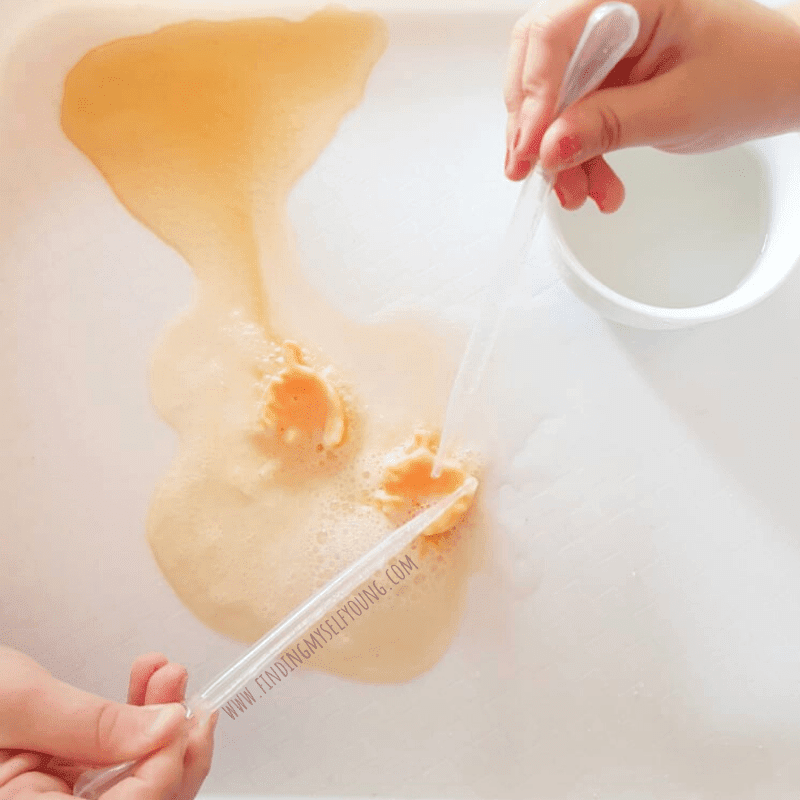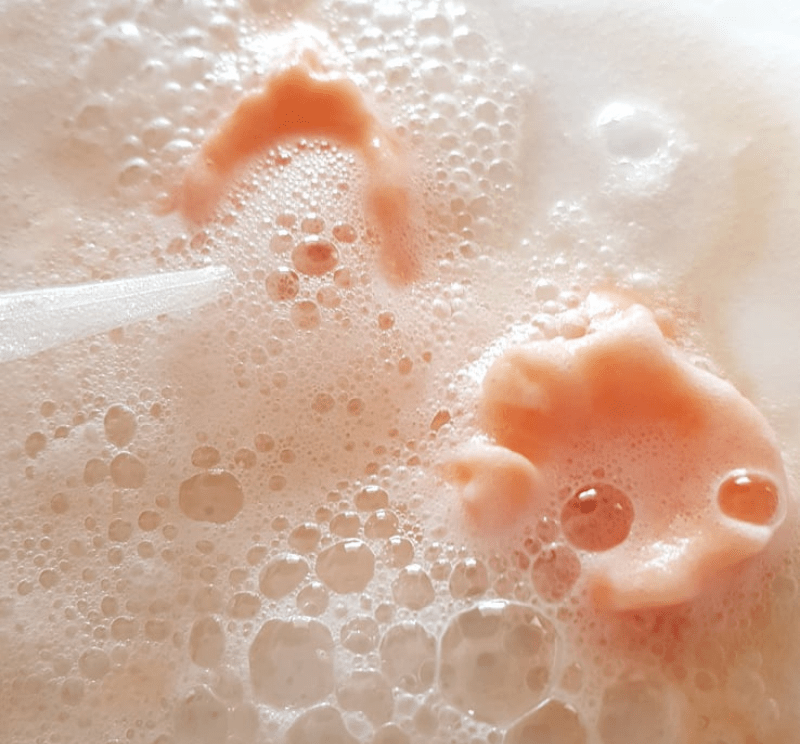If your kids love fun, simple science experiments then they'll love these fizzing pumpkins. This experiment is a fun way to combine a recipe, chemical reaction and sensory play all in one, with a spooky Halloween twist.
FIZZING PUMPKINS SCIENCE EXPERIMENT
This experiment is great for children of all ages from toddlers through to school kids. It's an interactive way to observe and explore chemical reactions and build fine motor skills. You'll need to prep some of the experiment the day before, but the kids can help with that too.
SUPPLIES TO MAKE FIZZING PUMPKINS
- Spoon
- Vinegar
- Pipettes
- 50ml water
- 1/2cup bicarb soda
- Orange Food colouring
- Pumpkin silicone mould
- Pyrex jug or bowl
- Small glass or bowl
- Shallow tray
The beauty of this experiment is that it requires items you'll most likely already have in your pantry like bicarb {baking soda}, vinegar and food colouring. If you don't already have pipettes you can get them in bulk from places like Amazon, dollar stores or some craft stores. If your children are young and you don't think they'll be able to squeeze the thin pipettes properly, you can get bigger bulb style pipettes, or toddler friendly pipettes in a fine motor tool set.
We picked up our silicone jack-o-lantern mould for a few dollars at Coles here in Australia, but you can usually find them at supermarkets, department stores and dollar stores from September until Halloween. The silicone moulds are also great to use for chocolates, jellies or making DIY crayons or chalk.
HOW TO MAKE FIZZING PUMPKINS
This experiment is so simple that the kids can be involved in every single step. Before you start make sure you have everything you'll need and everyone has clean hands. The first 4 steps are preparing the experiment and will need to be done the day/night before doing the actual experiment {steps 5 & 6}.
1. In a jug or bowl combine the bicarb soda + water with a spoon until it makes a smooth paste consistency.
2. Add a few drops of food colouring and stir until the paste is orange. Use orange food colouring or combine yellow and red to make orange. If the kids are doing this step dropper/squeeze style food colouring works best {trust me!}.
3. Carefully spoon the mixture into the silicone pumpkin mould. This can be a bit tricky as the silicone mould bends easily so it may need to be done by an adult. Wipe any excess mixture from the edges of the mould so the pumpkins will have a flat base.
4. Place the mould into the freezer for a few hours or overnight. You may want to sit the mould on a flat tray to make sure it doesn't move while freezing.
5. Carefully remove pumpkins from mould and place on flat tray with a small container of vinegar and a pipette. Despite being frozen the pumpkins will be quite delicate and start to get soft quickly once they're removed from the freezer.
6. Squirt vinegar from the pipette onto the pumpkins and watch the reaction. Does it fizz fast or slow? Can you hear it? Is it loud or quiet?
This experiment was great for both of my girls to do together despite there being a 4yr age gap between them. My big girl could use the pipette completely independently without instruction while my 4yr old had to be shown how to suck up the vinegar properly. She also occasionally had to use both hands to squeeze the pipette enough to suck up the vinegar which was great fine motor practice.
The girls both loved this experiment because they could do it together on the same tray, but still had their own pipettes and pumpkins to squirt. They loved watching the faces fizz and dissolve as the reaction occurred.
HOW DOES THE FIZZING PUMPKIN SCIENCE EXPERIMENT WORK?
Fizzing pumpkins are a twist on a traditional bicarb and vinegar experiment. It's the same chemical reaction, although a bit less intense as there's some water already added to make the initial paste.
When baking soda {bicarb soda} and vinegar meet it forms an acid-base reaction because an alkaline solution is reacting with an acidic solution. Baking soda is mildly alkaline so the frozen pumpkins are made from an alkaline solution which then reacts with the vinegar which is acidic. Once the solution combines it forms bubbles as it expels carbon dioxide gas.
MORE SCIENCE EXPERIMENTS KIDS WILL LOVE
Disclosure - This post contains some affiliate links for your convenience, which means I may make a small commission at no cost to you, should you make a purchase.
















